Bartolomeo Colleoni: Most Respected Mercenary General Of The 15th Century Italy
A. Sutherland - AncientPages.com - From the late Middle Ages until the mid-17th century, Italy was widely known for employing mercenary leaders – condottieri.
In his book "Mercenary Companies and the Decline of Siena", William Caferro wrote:
 Statue of Bartolomeo Colleoni. Andrea Verrocchio (1435–1488). Image credit: Novellón - CC BY-SA 4.0
Statue of Bartolomeo Colleoni. Andrea Verrocchio (1435–1488). Image credit: Novellón - CC BY-SA 4.0
"Of the many calamities that befell Europe in the fourteenth century, there was none worse than the raids of the great mercenary companies. Composed of professional soldiers, restless knights, and assorted adventurers from all over Europe, the companies were private armies, available for hire to the highest bidder.
They fought in France in the battles of the Hundred Years' War, in Spain...and in wars in German lands. When not fighting, they sustained themselves by raiding cities and towns with which they did not quarrel, plundering the countryside, and extorting money from local governments... The contemporary French chronicler Jean de Venette called them "men with no right and no reason other than their passion, iniquity, malice, and hope of gain..."
In the fourteenth century, one of the most famous figures was Sir John Hawkwood (c.1323–1394) or "John Sharp," a fourteenth-century English soldier and condottiero, whose achievements made him a man shrouded in myth in both England and Italy.
Another one was Bartolomeo Colleoni (1400 - 1475)', an Italian mercenary and one of the most prominent Italian commanders in the 15th century. He was well-known for his fidelity and solidity among the mercenaries; he was also a great patron of artists.
Turbulent Childhood And Youth Of Bartolomeo
Bartolomeo Colleoni was born in a castle in Solza near Bergamo, located about 300 km from Venice, northern Italy.
When he was nine years old, his father, a local nobleman known for his cruel nature, was stabbed in a dispute by his cousin Giovanni, not far from home, at the castle of Trezzo d'Adda. He lived with his mother and servants in a looted castle from then on.
At 14, he began serving as a bollard at the court of Philippe Arcelli of Piacenza; he never returned to Solza. He learned martial art from soldiers until he formed his infantry and cavalry unit to fight as a mercenary who would pay more.
 The equestrian statue of Bartolomeo Colleoni by Verrocchio in Venice. Image credit: Didier Descouens - CC BY-SA 4.0
The equestrian statue of Bartolomeo Colleoni by Verrocchio in Venice. Image credit: Didier Descouens - CC BY-SA 4.0
In the first half of the fifteenth century, Venice began to subordinate the adjacent areas of north-eastern Italy, growing to challenge its long-lasting rival – Milan.
Italy was, moreover, divided into several small kingdoms or urban republics waging endless wars and often changing alliances. These numerous wars demanded the participation of professionals, both mercenary soldiers and their military leaders - 'condottieri.'
On his first major expedition, Colleoni set off to central and southern Italy in 1418 under the command of Braccia da Montone, one of the greatest of the condottieri who dominated Italian history in the 14th and 15th centuries. Then he continued to train as a soldier, taught art and tactics of war, and entered the service of various condottieri, participating in several campaigns.
His specialty was fighting in the mountains.
Colleoni Enters Direct Service Of The Venetian Republic
An important turning point in Colleoni's life and career came when he entered the service of Francesco Bussone (called "Count of Carmagnola")' who, despite his successes, also made some 'mistakes.' There was evidence that he wanted to change the front plotting against Venice. Carmagnola was seized, imprisoned, and brought to trial for treason against the republic. Sentenced to death, he was beheaded in Venice on May 5, 1432.
Colleoni, on the other hand, entered the direct service of the Venetian Republic, which represented the crucial phase of his career.
He recaptured many towns and districts for Venice from the Milanese and, for a long time, continued to serve the Venetians and win battles at Brescia, Verona, and on the Lake of Garda.
Malpaga Castle And Many Good Deeds
In 1456, the famous Captain-General of the Venice Republic Bartolomeo Colleoni decided to buy Malpaga's Borough 100 gold ducats, aiming to turn it into his private house and the center of his domain. His formidable castle at Malpaga was both beautifully decorated with frescoes and fortified. It became the Commander's headquarters and witnessed numerous outstanding historical events, hosting renowned figures including Charles II, Duke of Burgundy, and Christian I, king of Denmark.
Like many others, Colleoni also changed sides. However, no act of treachery is attributed to him, nor did he subject the territories he passed through to the rapine and robbery so often practiced by other soldiers of fortune.
He participated in many military encounters and led troops to many victories, which helped him to gain international fame and fame that other Italian commanders at the time could undoubtedly envy him.
Involvement In Charity And Agricultural Improvements
When not fighting, Colleoni devoted his time to introducing agricultural developments on the vast estates which the Venetians had granted him and to charity.
In 1466, Bartolomeo founded an institution in Bergamo that works to this day to support girls from low-income families. Having many illegitimate children, he used to give dowries to young girls who wanted to marry.
In the 15th century, Italy was the site of political attacks and murders, poisonings, and betrayals. Maybe, for fear of assassins, Colleoni's bedroom had no fireplace through which the bombers could enter the room. He was safe there. His Malpaga Castle was protected by a wide moat and built as a highly inaccessible fortress.
It was able to resist multiple attacks and battles.
When Venice was at peace, Colleoni remained at the disposal of the republic in times of war until his death. After being Venetian captain-general for twenty years, he died on July 3, 1475.
'He who serves a republic serves no one' was one of many epitaphs written in memory of Colleoni.
Written by - A. Sutherland - AncientPages.com Senior Staff Writer
Copyright © AncientPages.com All rights reserved. This material may not be published, broadcast, rewritten or redistributed in whole or part without the express written permission of AncientPages.com
Expand for referencesReferences:
Urban W. Medieval Mercenaries
Mallett, Michael. Mercenaries and their Masters
More From Ancient Pages
-
 25,000 Ancient Egyptian Statues, Ushabti Figurines And Artifacts From New Kingdom Cemetery Revealed For The First Time
Archaeology | Oct 26, 2023
25,000 Ancient Egyptian Statues, Ushabti Figurines And Artifacts From New Kingdom Cemetery Revealed For The First Time
Archaeology | Oct 26, 2023 -
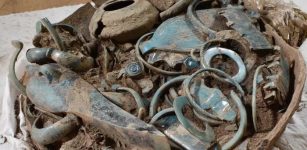 Hundreds Of Exceptional Bronze Age Artifacts Discovered In France Were Probably Offerings
Archaeology | Aug 28, 2021
Hundreds Of Exceptional Bronze Age Artifacts Discovered In France Were Probably Offerings
Archaeology | Aug 28, 2021 -
 Ancient Calendar Predicted The Coronavirus And Other Disasters In 2020 – History Researcher Says
News | Mar 24, 2020
Ancient Calendar Predicted The Coronavirus And Other Disasters In 2020 – History Researcher Says
News | Mar 24, 2020 -
 Vast Paleogenetic Study Reveals Insights On Migration, Farming And Language Development Across The Southern Arc
Archaeology | Aug 26, 2022
Vast Paleogenetic Study Reveals Insights On Migration, Farming And Language Development Across The Southern Arc
Archaeology | Aug 26, 2022 -
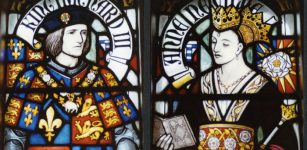 On This Day In History: Mysterious Death Of White Queen Anne Neville – On Mar 16, 1485
News | Mar 16, 2017
On This Day In History: Mysterious Death Of White Queen Anne Neville – On Mar 16, 1485
News | Mar 16, 2017 -
 Abydos: One Of The Most Important Cities Of Ancient Egypt
Civilizations | Jul 15, 2016
Abydos: One Of The Most Important Cities Of Ancient Egypt
Civilizations | Jul 15, 2016 -
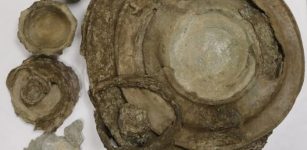 Rare 2,000-Year-Old Roman Hoard Discovered In Suffolk
Archaeology | Jul 5, 2023
Rare 2,000-Year-Old Roman Hoard Discovered In Suffolk
Archaeology | Jul 5, 2023 -
 Central European Early Iron Age ‘Hascherkeller’ Reveals Its Secrets
Archaeology | Jul 20, 2022
Central European Early Iron Age ‘Hascherkeller’ Reveals Its Secrets
Archaeology | Jul 20, 2022 -
 Probably The Oldest Star Map Discovered In Stone Chamber Of The Kitora Tomb, Asuka Nara, Japan
Ancient History Facts | Jul 19, 2015
Probably The Oldest Star Map Discovered In Stone Chamber Of The Kitora Tomb, Asuka Nara, Japan
Ancient History Facts | Jul 19, 2015 -
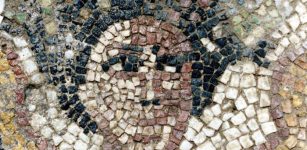 Floors In Ancient Greek Luxury Villa Were Laid With Recycled Glass
Archaeology | Jul 25, 2022
Floors In Ancient Greek Luxury Villa Were Laid With Recycled Glass
Archaeology | Jul 25, 2022 -
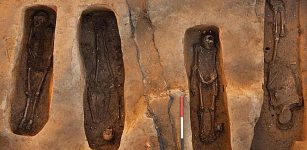 Jamestown: Unearthed graves with four bodies and a small sealed silver box
News | Aug 28, 2015
Jamestown: Unearthed graves with four bodies and a small sealed silver box
News | Aug 28, 2015 -
 “Thogcha” – Thousand-Year-Old Tibetan Amulets And The Bon Culture
Ancient Technology | Dec 11, 2021
“Thogcha” – Thousand-Year-Old Tibetan Amulets And The Bon Culture
Ancient Technology | Dec 11, 2021 -
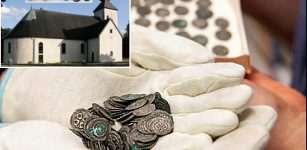 Trove Of Coins Dating Back To The 1100s Found On Visingsö, Sweden
Archaeology | Apr 8, 2024
Trove Of Coins Dating Back To The 1100s Found On Visingsö, Sweden
Archaeology | Apr 8, 2024 -
 Human And Neanderthal Brains Have A Surprising ‘Youthful’ Quality In Common – New Study
Featured Stories | Jan 6, 2023
Human And Neanderthal Brains Have A Surprising ‘Youthful’ Quality In Common – New Study
Featured Stories | Jan 6, 2023 -
 Ephemeral Evidence Of Mediterranean Mobility – Boats, Migration, And The Central Mediterranean Passage In Focus
Archaeology | Dec 23, 2021
Ephemeral Evidence Of Mediterranean Mobility – Boats, Migration, And The Central Mediterranean Passage In Focus
Archaeology | Dec 23, 2021 -
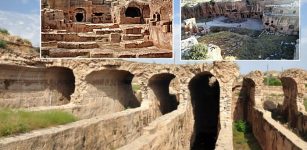 Focus On Unique And Spectacular Gallery Grave In Ancient City Of Dara, Mardin
News | Aug 24, 2020
Focus On Unique And Spectacular Gallery Grave In Ancient City Of Dara, Mardin
News | Aug 24, 2020 -
 Viking House The Size Of Two Tennis Courts Discovered In Norway
Archaeology | Jul 20, 2023
Viking House The Size Of Two Tennis Courts Discovered In Norway
Archaeology | Jul 20, 2023 -
 Puzzling Connection Between Native Americans And Lost Northern European Race Could Re-Write History
Ancient Mysteries | Apr 14, 2018
Puzzling Connection Between Native Americans And Lost Northern European Race Could Re-Write History
Ancient Mysteries | Apr 14, 2018 -
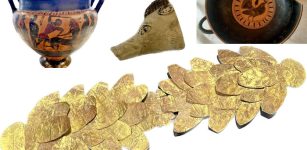 15 Precious Ancient Objects Returned To Greece From Switzerland – Antique Dealer Charged With Trafficking
Artifacts | Feb 3, 2023
15 Precious Ancient Objects Returned To Greece From Switzerland – Antique Dealer Charged With Trafficking
Artifacts | Feb 3, 2023 -
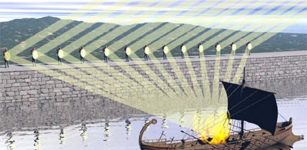 Giant Solar Mirrors And Sophisticated Lenses – Advanced Ancient Technology Used By Our Ancestors
Ancient Technology | Jun 15, 2020
Giant Solar Mirrors And Sophisticated Lenses – Advanced Ancient Technology Used By Our Ancestors
Ancient Technology | Jun 15, 2020
